It is only in reviewing the history of this ministry that we can appreciate how the ministry unfolded as God directed, expanded, and multiplied its services.
We have not always been called the Board of Retirement and Insurance. We were formerly known as the Board of Superannuation. The name and program of the Board was changed at the 1969 session of the National Association in St. Louis, Missouri.
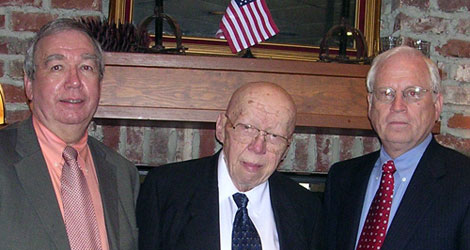
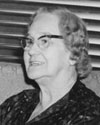 The first record of the Superannuation Board is found in the 1939 minutes of the National Association. In this session, general guidelines for the work of the board were approved. The Board reported receipts of $190.24 for the year. Mrs. J. E. Simpson, Dean of Women at Free Will Baptist Bible College for many years, was the first chairman.
The first record of the Superannuation Board is found in the 1939 minutes of the National Association. In this session, general guidelines for the work of the board were approved. The Board reported receipts of $190.24 for the year. Mrs. J. E. Simpson, Dean of Women at Free Will Baptist Bible College for many years, was the first chairman.
In the minutes of the 1943 session, the constitution and by-laws of the board are found. At that time, the main thrust of this pioneer ministry was to acquaint the laity with the peculiar needs of the minister and his family. It was a small beginning in providing ministerial retirement benefits. An annuity insurance program was initiated in 1944 with the denomination paying half the premium on this insurance up through the 1980s.
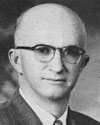 In reading through the early records of the Board of Superannuation, several men stand out as playing a prominent role. Rev. Joe Fort, Rev. K.V. Shutes, and Rev. Chester Huckaby, along with others, helped pioneer the new ministry. Especially Brother Shutes, who traveled throughout the denomination and encouraged churches to purchase the annuity policies for pastors. There were only a few full-time churches at the time and the church constituency had not caught the vision of providing adequate care for pastors. We thank God for his efforts in paving the way for what we have today.
In reading through the early records of the Board of Superannuation, several men stand out as playing a prominent role. Rev. Joe Fort, Rev. K.V. Shutes, and Rev. Chester Huckaby, along with others, helped pioneer the new ministry. Especially Brother Shutes, who traveled throughout the denomination and encouraged churches to purchase the annuity policies for pastors. There were only a few full-time churches at the time and the church constituency had not caught the vision of providing adequate care for pastors. We thank God for his efforts in paving the way for what we have today.
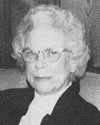 Upon his going to be with the Lord, his wife, Sister Lora Shutes, continued as the secretary/treasurer of the Board. She remained in this position until 1969.
Upon his going to be with the Lord, his wife, Sister Lora Shutes, continued as the secretary/treasurer of the Board. She remained in this position until 1969.
The purpose of the National Superannuation Board was three-fold: to provide for a minister’s family in the event of his death, to furnish a regular income in case a minister should be permanently and totally disabled before age 65, and to insure income for the minister during retirement years.
At the National Association in Middlesex, North Carolina, July 10-12, 1945, the National Superannuation Board reported issuing 21 policies. Despite this drain on income, the board noted a $300 surplus. It was very humble beginnings. The board also set the goal of raising $2,400 in support and issuing 25 additional policies during 1946. The benefits of the early program continued to be paid to survivors of those trusting pioneer participants up until just a few years ago.
This was the Free Will Baptist program for the next 20 or so years.
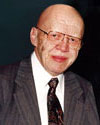 A pension plan for ministers was mentioned over the years, but no action was taken until 1968. The present retirement program was started by the Board of Superannuation of the North Carolina Association of Free Will Baptists. They met on March 22, 1968, at the Garner Free Will Baptist Church where a plan formulated by Herman L. Hersey was presented and approved. Mr. Hersey was named general manager. He immediately put the plan into operation and continued on a part-time basis promoting and operating the plan from the parsonage at Garner. His wife, Vernie, teamed up as secretary-bookkeeper.
A pension plan for ministers was mentioned over the years, but no action was taken until 1968. The present retirement program was started by the Board of Superannuation of the North Carolina Association of Free Will Baptists. They met on March 22, 1968, at the Garner Free Will Baptist Church where a plan formulated by Herman L. Hersey was presented and approved. Mr. Hersey was named general manager. He immediately put the plan into operation and continued on a part-time basis promoting and operating the plan from the parsonage at Garner. His wife, Vernie, teamed up as secretary-bookkeeper.
The new department was enthusiastically welcomed into the denominational family and during the first year Free Will Baptists from 28 states supplied funds totaling $5,538.79 for office operating expenses.
By the end of the year, eleven pastors showed their good faith in the plan by enrolling. First Free Will Baptist Church at Stanley led the way as the first church to contribute to the pension fund for their pastor, Sherman A. Branch.
As soon as the first hundred dollars was on deposit, a bond was purchased from Bethel Church, Gastonia. By December 31, the modest assets totaled $680.18 and were invested in bonds with First Church, Raleigh and Faith Church, Cary.
In the early months of 1969, the infant plan came to the attention of the National Board of Superannuation. They studied the plan, endorsed it, and requested that it be extended to the national level to serve the whole denomination.
In July, the National Association adopted the 16-month-old plan. Herman Hersey remained as manager of the Investment Retirement Plan and was elected general director of the new national department, the Board of Retirement and Insurance.
At that time, no one could have foreseen how important a part its ministries would play in so many lives. As of today there have been over 2,300 participants in the program. There are over 1,500 active members today.
Year 1970 proved to be a momentous year. The Board of Foreign Missions enrolled all missionaries in the plan.
Through the years, the Board of Retirement became more than just an office to hold Retirement monies in reserve for ministers. It developed into a multifaceted ministry, even giving birth to another national department, the Foundation. Between these two departments, we now manage assets approaching almost $100 million.
One of the side benefits of the ministry during these years was to help churches in building and expansion programs. Until 1986 all funds were invested within the denomination, purchasing several hundred thousand dollars worth of church bonds. In addition, families were helped in purchasing church bonds through a bond purchase plan. The last bond held by the Board of retirement matured in 1994.
Year 1973 proved to be historically significant. The new department and pension plan outgrew its part-time program of operation. Therefore, the board voted in April to make the program a full-time work and move the offices to Nashville, Tennessee. A spacious office was rented in the Church Training Service building on the grounds of the National Offices.
Year 1974 proved to be momentous year. The first retirement check paid to a Free Will Baptist minister was issued. It was for the modest amount of $2,841.08. As of December 31, 2008, we have paid out over $21 million in retirement benefits. We now have over 150 individuals receiving monthly checks totaling just under $100,000 per month.
In 1977, first mortgage loans were made available to our churches. In 1991 first mortgage loans exceeded five million dollars. The church loan program was discontinued in 2006.
Trust funds were made available to individuals, churches, and denominational agencies so that money they had set aside for some future purpose could be deposited with the Board of Retirement to be invested in loans to churches. Fair interest would be paid by the churches on the loans, fair interest would be paid to the depositor, and a small profit would benefit the members of the pension plan and help meet office operating expenses.
On October 13, 1978, assets of the retirement fund reached the million dollar mark for the first time. As of December 31, 2008, our assets topped $32 million.
In 1978, the Missouri State Association voted to set up a matching retirement fund account for pastors. Arkansas instituted a similar plan in 1979. Today at least eight states have state programs, plus Randall House has the “Randall House Rewards” program where the pastor of a church using Randall House curriculum will receive one percent of the cost of the curriculum into his retirement account.
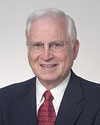 In March 1988, we issued our first annuity check to a retiring participant. Since that time, nearly 100 others have joined him in choosing one of the six annuity options we offer our retirees.
In March 1988, we issued our first annuity check to a retiring participant. Since that time, nearly 100 others have joined him in choosing one of the six annuity options we offer our retirees.
Brother Herman retired in 1993 and Bill Evans took over the helm as General Director on July 1, 1993. While Brother Bill was the director our assets grew to almost $30 million. Our settlement options were greatly expanded under this administration.
Brother Bill retired as General Director on July 31, 2005, and Ray Lewis was named his successor. Under Brother Ray’s leadership the Plan Document went through a major revision and update to bring us in complete compliance with IRS regulations. Our assets grew to over $54 million, earnings allocations were revised, and for the first time participants were able to go online and check their accounts.

In 2010, the Plan added the Conservative Strategy as an additional investment option, allowing participants the option to choose their investment strategy for the first time. Again in 2012, two more investment options were added in the Moderate and Maximum Strategies.
In 2015, the Plan began offering the ROTH 403(b) to employees of the Free Will Baptist denomination as an additional option for them to prepare for their retirement needs.
Brother Ray retired in December 2015 after 32 years of service with the Board of Retirement, 10 as Director and CEO.
 John Brummitt assumed the duties of President and CEO in January of 2016. He is the fourth person to hold this position since the office was established in 1969. John joined the staff on April 1, 2006 as the Business Manager and was later named CFO.
John Brummitt assumed the duties of President and CEO in January of 2016. He is the fourth person to hold this position since the office was established in 1969. John joined the staff on April 1, 2006 as the Business Manager and was later named CFO.
We have come a long way since that first report in 1939 with the $190.24. Throughout the history of the Board of Retirement, there have been some good times, bad times, and some trying times. But through it all, God has been faithful. It is exciting to be a part of this ministry, and we look forward to what God has in store for our future.

